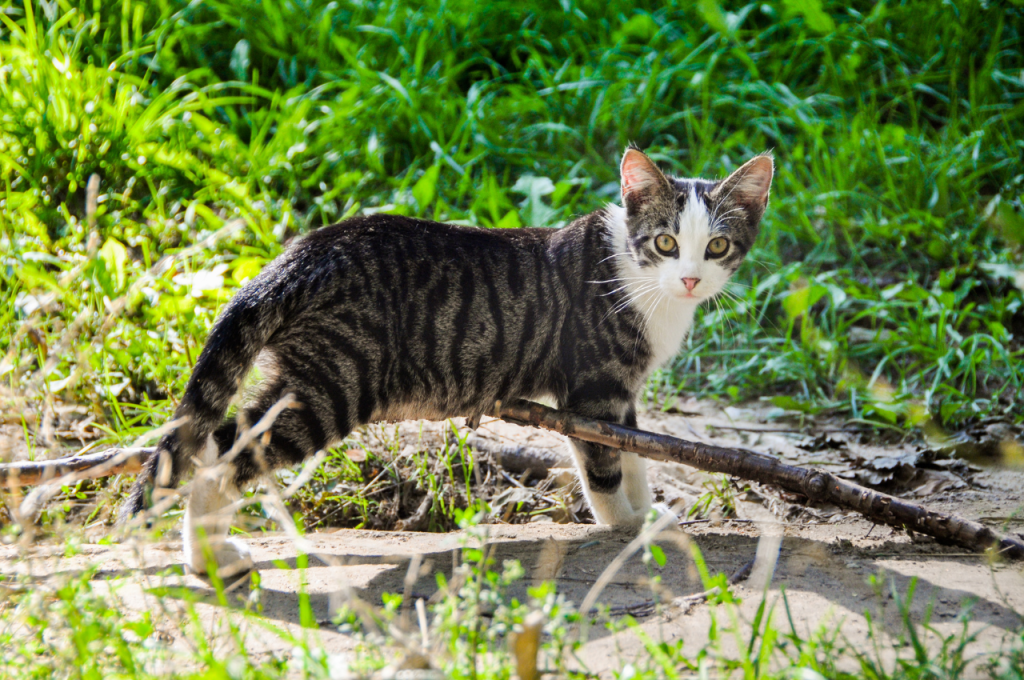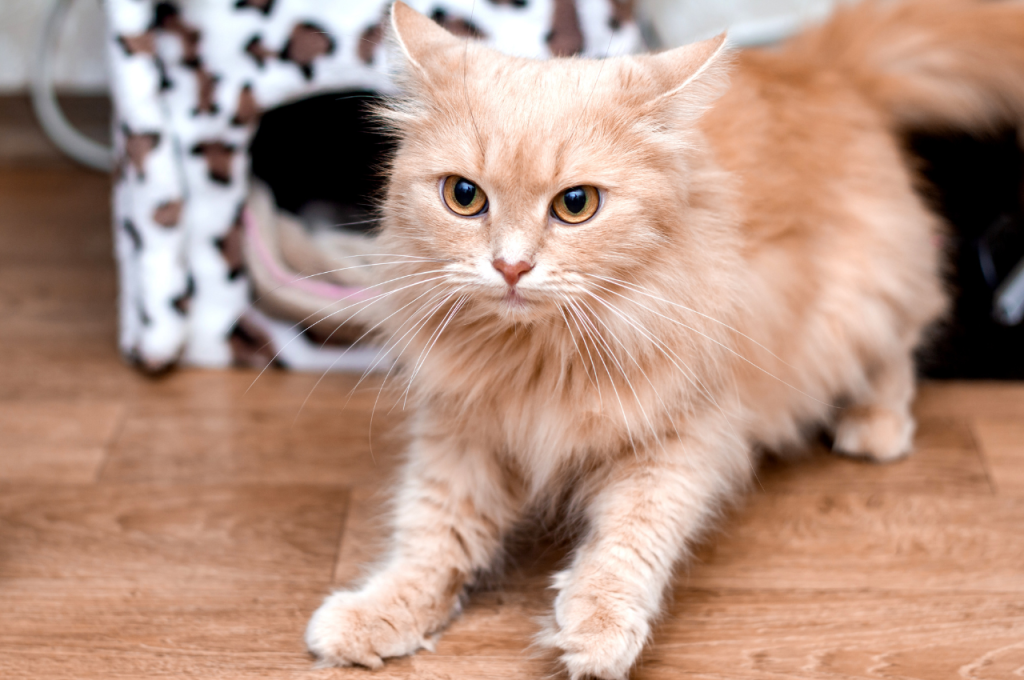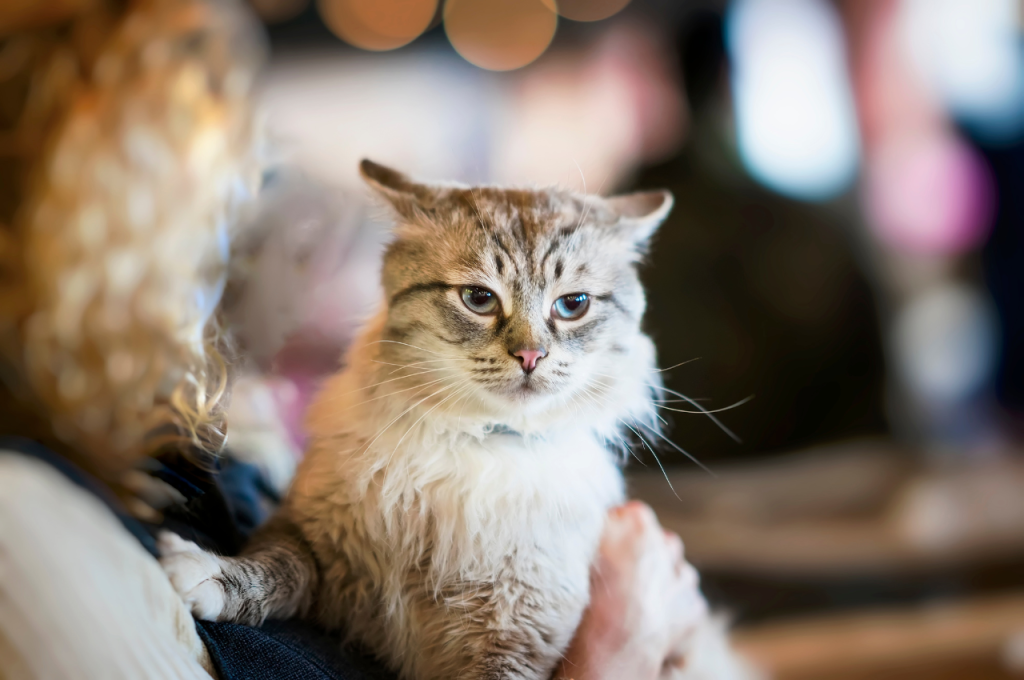To treat separation anxiety in cats, create a consistent routine and provide interactive toys for stimulation. Addressing any underlying stressors and using calming products may also help alleviate symptoms.
Separation anxiety in cats can be distressing for both the cat and the owner. Understanding the root cause of the anxiety and implementing targeted strategies can significantly improve the cat’s well-being. By incorporating a mix of environmental enrichment, positive reinforcement, and potentially seeking advice from a veterinarian, you can effectively manage and reduce separation anxiety in your feline companion.
This comprehensive approach aims to create a secure and comfortable environment for your cat, promoting their mental and emotional health.
Identifying Separation Anxiety In Cats
Detecting separation anxiety in cats involves observing signs like excessive meowing or destructive behavior. To treat this, create a calming environment, use interactive toys, and establish a routine to ease their anxiety. Remember, seeking advice from a veterinarian can provide tailored solutions for your feline friend’s well-being.

Cats are independent creatures that enjoy spending time alone. However, some cats may develop separation anxiety, a condition where they become extremely anxious and distressed when left alone. Identifying separation anxiety in cats is crucial to ensure they receive the right treatment. Below are some common symptoms, triggers, and causes of separation anxiety in cats.
Common Symptoms
It can be challenging to identify separation anxiety in cats because some of the symptoms may be similar to other behavioral issues. Some common signs of separation anxiety in cats include:
- Excessive vocalization, such as constant meowing or howling
- Urinating and defecating outside the litter box
- Scratching or destructive behavior, especially near doors and windows
- Loss of appetite or overeating
- Over-grooming or self-mutilation
Triggers And Causes
Understanding the triggers and causes of separation anxiety in cats can help prevent the condition from worsening. Some common triggers include:
- Changes in routine, such as a new job or moving house
- Being left alone for long periods
- Loss of a companion animal or human
The exact causes of separation anxiety in cats are unknown. However, it is believed to be related to a lack of socialization or traumatic experiences. If you suspect your cat has separation anxiety, it is essential to consult with a veterinarian. They can rule out any underlying medical conditions and provide guidance on how to manage the condition. With proper treatment and care, your cat can overcome separation anxiety and lead a happy, stress-free life.
The Science Behind Feline Separation Anxiety
Understanding the science behind feline separation anxiety is crucial in effectively addressing this common issue. Cats, like humans, can experience distress when separated from their caregivers. By delving into the attachment theory in cats and the impact of stress responses, we can gain valuable insights into how to treat and manage this condition.
Attachment Theory In Cats
Cats form strong emotional bonds with their owners, seeking comfort and security from their presence. When separated, they may experience feelings of insecurity and anxiety, leading to various behavioral and physiological responses.
Stress Responses And Their Impact
When faced with separation, cats may exhibit stress responses such as excessive vocalization, destructive behavior, and changes in eating patterns. These manifestations of anxiety can have a significant impact on their overall well-being and quality of life.
Initial Steps To Alleviate Anxiety
Separation anxiety in cats can be distressing for both the pet and the owner. However, there are several initial steps that can be taken to alleviate the anxiety and make the cat feel more secure. These steps include creating a safe space, establishing routine and predictability, and providing reassurance. By implementing these initial measures, pet owners can help their cats feel more at ease when they are alone.
Creating A Safe Space
Cats, like humans, appreciate having a safe and secure space where they can retreat to when feeling anxious. This space should be quiet, comfortable, and equipped with familiar items such as bedding, toys, and scratching posts. Additionally, it’s important to ensure that this space is easily accessible to the cat at all times, providing them with a sense of control and security.
Routine And Predictability
Establishing a consistent daily routine can help reduce a cat’s anxiety. This includes feeding, playtime, and other activities at the same times each day. Predictability provides cats with a sense of security and helps them feel more in control of their environment. Additionally, maintaining a stable environment with minimal changes can also help alleviate anxiety.
Behavioral Modifications Techniques
When it comes to treating separation anxiety in cats, behavioral modification techniques can be highly effective. By gradually exposing your cat to situations that trigger their anxiety and using positive reinforcement, you can help them overcome their fear and feel more comfortable being alone. Two common techniques used in behavioral modification are desensitization practices and counter-conditioning strategies.

Desensitization Practices
Desensitization involves gradually exposing your cat to the stimuli that cause their anxiety in a controlled and safe manner. The goal is to help them become less sensitive to these triggers over time. Here are some desensitization practices you can try:
- Start by leaving your cat alone for short periods and gradually increase the duration. This helps them get used to being alone without becoming overwhelmed.
- Use cues that indicate your departure, such as picking up your keys or putting on your coat, without actually leaving. This helps your cat associate these cues with your eventual return, reducing their anxiety.
- Provide your cat with engaging toys or puzzle feeders to keep them occupied while you’re away. This can help distract them from their anxiety and make their alone time more enjoyable.
Counter-conditioning Strategies
Counter-conditioning aims to change your cat’s emotional response to the triggers of their separation anxiety. By associating these triggers with positive experiences, you can help your cat feel more relaxed when faced with them. Here are some counter-conditioning strategies to consider:
- Reward your cat with treats or praise when they exhibit calm behavior while you’re away. This reinforces positive associations with your absence.
- Play soothing music or use pheromone diffusers, such as Feliway, to create a calming environment for your cat.
- Gradually expose your cat to the triggers of their anxiety, such as picking up your keys or putting on your coat, while providing them with treats or engaging in play. This helps them associate these triggers with positive experiences.
By implementing these behavioral modification techniques, you can help your cat overcome their separation anxiety and improve their overall well-being. Patience and consistency are key, so be sure to consult with a veterinarian or animal behaviorist for personalized guidance.
Environmental Enrichment Strategies
When treating separation anxiety in cats, environmental enrichment strategies can play a crucial role in helping to alleviate stress and promote overall well-being. By creating a stimulating and engaging environment, you can help your feline friend feel more secure and content during your absence.
Interactive Toys And Puzzles
Interactive toys and puzzles are essential for keeping your cat mentally stimulated and entertained. Engage your cat’s natural instincts by providing toys that encourage hunting, pouncing, and problem-solving. Look for toys that dispense treats or have hidden compartments to keep your cat occupied and mentally engaged.
Climbing Structures And Hiding Spots
Creating vertical space with climbing structures and providing hiding spots can give your cat a sense of security and territory. Offer a variety of perches, shelves, and cat trees to allow your cat to observe their surroundings from different vantage points. Additionally, provide cozy hiding spots such as enclosed beds or tunnels where your cat can retreat when feeling anxious.
The Role Of Diet And Supplements
To treat separation anxiety in cats, a balanced diet and supplements play a crucial role. Incorporating calming supplements such as chamomile and tryptophan into their diet can help reduce anxiety levels. Additionally, providing interactive feeders and puzzle toys during mealtime can also alleviate stress and anxiety in cats.
Nutritional Support For Anxious Cats
Proper nutrition can help ease separation anxiety in cats by promoting overall well-being.
- Include high-quality protein in their diet to support brain health.
- Omega-3 fatty acids from fish oil can reduce stress and improve mood.
- Avoid artificial additives that may trigger anxiety in sensitive cats.
Natural Supplements And Their Benefits
Supplements can complement a cat’s diet to alleviate separation anxiety symptoms.
- Chamomile promotes relaxation and reduces stress levels.
- L-Theanine can have calming effects on anxious cats.
- Melatonin aids in regulating sleep patterns and reducing anxiety.
Long-term Management And Prevention
Long-term management and prevention are crucial for treating separation anxiety in cats. Implementing behavior modification techniques, providing environmental enrichment, and establishing a consistent routine can help alleviate their distress and promote a sense of security. Additionally, using pheromone diffusers and consulting with a veterinarian for potential medication options can further aid in managing this condition.

Maintaining Routine Checks
Regular veterinary visits help monitor your cat’s progress.
Continued Behavioral Support
Provide ongoing mental and physical stimulation.
Conclusion
To conclude, dealing with separation anxiety in cats can be a challenging task, but it is not impossible. By understanding the symptoms, causes, and treatments, you can help your furry friend feel more comfortable and secure when you are not around.
Remember to be patient, consistent, and loving in your approach, and don’t hesitate to seek professional help if needed. With the right care and attention, your cat can learn to cope with separation anxiety and lead a happy, healthy life.
